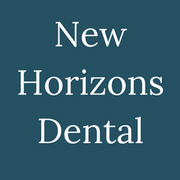
Gum recession is a consequence of gum disease. This condition is characterized by the gum tissue pulling back from the teeth, which may leave roots exposed and cause discomfort. Receding gums also increase your risk of cavities and tooth loss, which is why you must seek timely treatment from a dentist if you notice it. To help you care for your smile, here’s all you need to know about this issue.
What Causes Gum Recession?
Poor dental hygiene is a leading cause of gum disease, which then results in receding gums. For example, untreated gingivitis attacks tissue until it begins to pull back from the tooth. As the tissue is destroyed, a person might experience increased sensitivity. Bleeding and swollen gums are another common sign of gum disease. Gum problems can also result from genetic factors.
Can Gum Recession Be Prevented?
 Daily brushing and flossing is the best way to prevent gums from receding. If you tend to brush your teeth harshly, employ a gentler touch and make sure your toothbrush has soft bristles. If you have a family history of gum disease, visit your dentist regularly to remove plaque buildup and prevent this condition. You might also need more frequent teeth cleanings to keep dental issues at bay.
Daily brushing and flossing is the best way to prevent gums from receding. If you tend to brush your teeth harshly, employ a gentler touch and make sure your toothbrush has soft bristles. If you have a family history of gum disease, visit your dentist regularly to remove plaque buildup and prevent this condition. You might also need more frequent teeth cleanings to keep dental issues at bay.
What Treatments Are Available?
Deep cleaning procedures known as tooth scaling and root planing remove built-up plaque and tartar from the gum line. However, if gum tissue has pulled back and formed pockets, your dentist might recommend a surgical procedure to restore it. During this treatment, the soft tissue will be repositioned over the teeth, which prevents sensitivity and bacteria from entering the exposed area.
New Horizons Dental in Wisconsin Rapids, WI, not only helps prevent gum disease, but also offers treatment options for those with gum recession. They combine scaling and root planing with antibiotics to remove any lingering bacteria. They also provide instructions for at-home dental care to ensure you’re brushing and flossing effectively. Learn more about scaling and planing procedures online or call (715) 424-7810 to schedule an appointment.
About the Business
Have a question? Ask the experts!
Send your question

